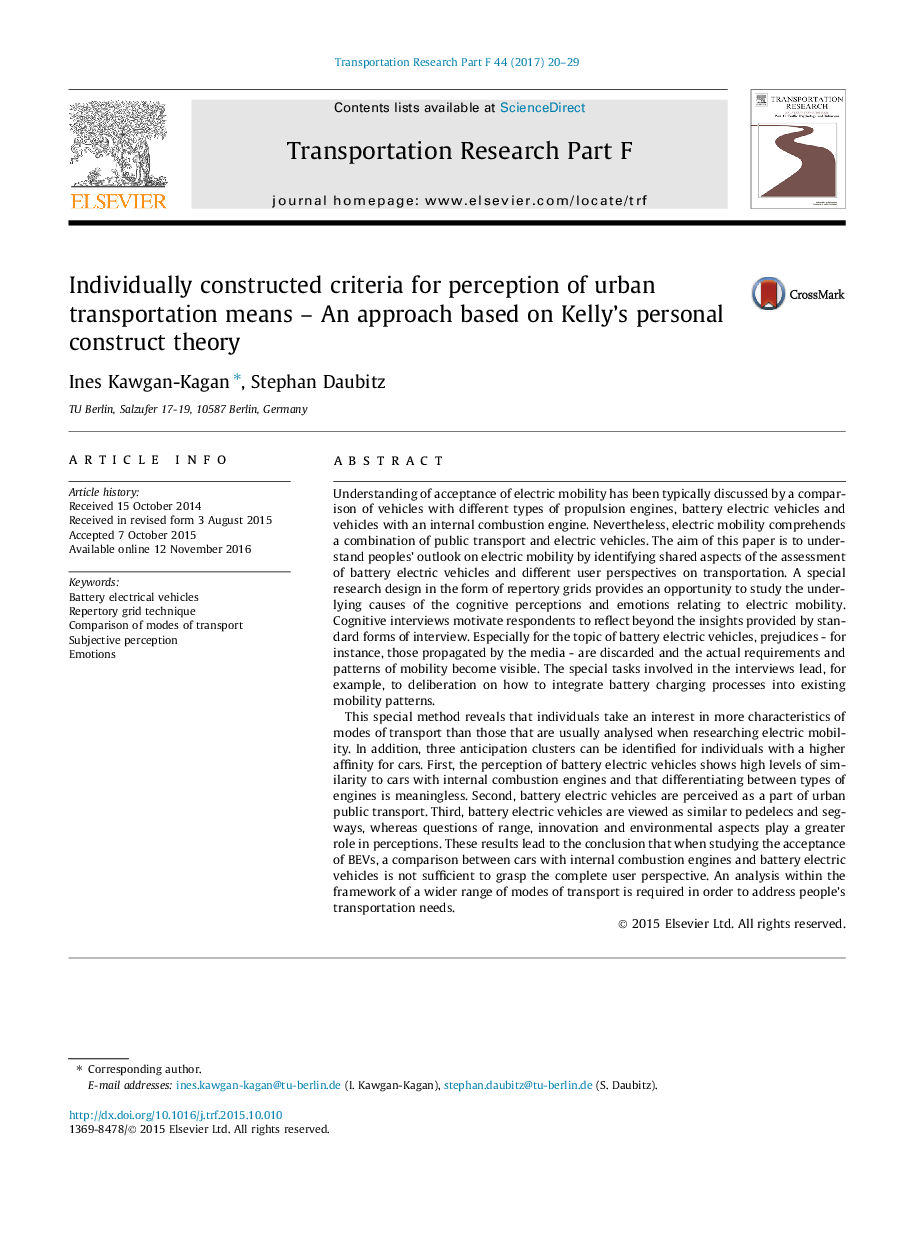| کد مقاله | کد نشریه | سال انتشار | مقاله انگلیسی | نسخه تمام متن |
|---|---|---|---|---|
| 5037451 | 1472441 | 2017 | 10 صفحه PDF | دانلود رایگان |
- The scope of subjective perception of battery electric vehicles is much larger than has been considered in previous research.
- There is a wide range of assessment criteria besides cost and environmental issues.
- The full range of modes of transport has to be considered, when studying acceptance.
- Three different clusters of perception of BEVs require different strategies to be addressed.
- Personal experience and self-reflection on behaviour increase acceptance.
Understanding of acceptance of electric mobility has been typically discussed by a comparison of vehicles with different types of propulsion engines, battery electric vehicles and vehicles with an internal combustion engine. Nevertheless, electric mobility comprehends a combination of public transport and electric vehicles. The aim of this paper is to understand peoples' outlook on electric mobility by identifying shared aspects of the assessment of battery electric vehicles and different user perspectives on transportation. A special research design in the form of repertory grids provides an opportunity to study the underlying causes of the cognitive perceptions and emotions relating to electric mobility. Cognitive interviews motivate respondents to reflect beyond the insights provided by standard forms of interview. Especially for the topic of battery electric vehicles, prejudices - for instance, those propagated by the media - are discarded and the actual requirements and patterns of mobility become visible. The special tasks involved in the interviews lead, for example, to deliberation on how to integrate battery charging processes into existing mobility patterns.This special method reveals that individuals take an interest in more characteristics of modes of transport than those that are usually analysed when researching electric mobility. In addition, three anticipation clusters can be identified for individuals with a higher affinity for cars. First, the perception of battery electric vehicles shows high levels of similarity to cars with internal combustion engines and that differentiating between types of engines is meaningless. Second, battery electric vehicles are perceived as a part of urban public transport. Third, battery electric vehicles are viewed as similar to pedelecs and segways, whereas questions of range, innovation and environmental aspects play a greater role in perceptions. These results lead to the conclusion that when studying the acceptance of BEVs, a comparison between cars with internal combustion engines and battery electric vehicles is not sufficient to grasp the complete user perspective. An analysis within the framework of a wider range of modes of transport is required in order to address people's transportation needs.
Journal: Transportation Research Part F: Traffic Psychology and Behaviour - Volume 44, January 2017, Pages 20-29
